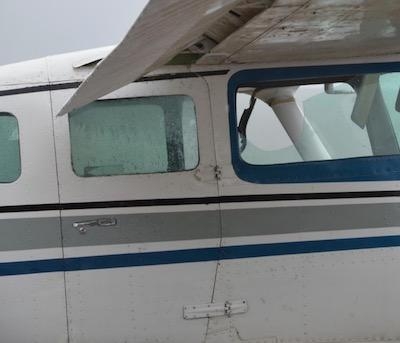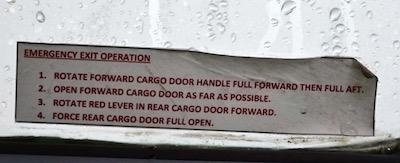Considers Airworthiness Directive Following Accident With Fatalities In Canada
Transport Canada recently contacted the FAA with concerns for the use of cargo doors as an emergency exit on Cessna 206 models. Following a fatal accident in August 2018, where a float-configured U206G capsized and became submerged after loss of control during landing, the Transportation Safety Board (TSB) of Canada concluded the accident was survivable. Canadian authorities are considering mandatory action to require a Cessna door handle kit, placards, and limiting the airplane occupancy to five for all Cessna U206 airplanes on their registry. The FAA is continuing to investigate to determine if similar AD action is required.

The FAA has recently published an Airworthiness Concern Sheet (ACS) highlighting the issue. The agency is requesting owners, operators and pilots provide any information on prior experience with the 206 cargo doors with regard to use, operation, and clarity of placards and instructions as well as any modifications or alterations completed by owners and operators that aid in the usability with and without flaps extended. Please provide any other information you feel may be helpful for consideration as part of the evaluation.
The Cessna 206 cargo door configuration and use as an emergency exit has been the subject of several discussions since its introduction in the 1960s, primarily following float-related accidents. Operation of the door handles as well as opening the doors when the flaps are extended has been the primary concern. The FAA, Transport Canada, and Cessna have investigated this area of concern numerous times in the past and have examined possible design changes, but no cost-effective and feasible or practical improvements were identified. Cessna issued a Service Bulletin and Kit (SEB91-4) in 1991 providing a door handle modification that simplified the opening procedure as well as luminescent placards.
The Canadian authorities have done extensive research and studies into seaplane (float) accidents and survivability aspects related to these events. Most accidents occur during the takeoff and landing phases and mainly attributed to loss of control from failing to maintain speed, unfavorable winds, or using unsuitable areas for takeoff, landing, and taxiing. Pilot qualifications, training, and proficiency are additional items identified in the cause of many accidents. These studies reflect a number of reasons for drowning which include incapacitation, injuries, inability to unlatch seatbelt, disorientation, inability to locate exit and/or open the door or window. Occupants usually have seconds to unbuckle and find a door or window to escape and often this is being done while upside down in a dark cockpit or cabin with extremely cold water rushing into the area. As part of these unique operations over and on the water, authorities have made impactful changes involving training, preflight briefings, as
well as the use of personal flotation devices.

Cessna Aircraft Company produced approximately 7,000 of the 206/U206/TU206 variant over the 55 years since initial entry into service. The 206H/T206H was introduced in 1996 following the restart of single-engine production airplanes by the company. The newer 206H/T206H incorporates the improvements that were made with the 1991 service bulletin (SEB 91-4) that was applicable to the older 206 fleet. The company currently does not have any service bulletin kits in stock, but based on list price, it’s anticipated the cost of the kit and installation would be approximately $3500 for each airplane.
The ACS is part of the FAA’s investigative process to help communicate with owners, operators, type clubs, and other industry stakeholders to gain insight into a safety concern and seek feedback. Based on this feedback, the FAA can determine an appropriate path forward relative to the entire fleet.
(Source: FAA. Images provided by the TSB)
 ANN's Daily Aero-Term (04.28.24): Airport Marking Aids
ANN's Daily Aero-Term (04.28.24): Airport Marking Aids Aero-News: Quote of the Day (04.28.24)
Aero-News: Quote of the Day (04.28.24) ANN's Daily Aero-Linx (04.28.24)
ANN's Daily Aero-Linx (04.28.24) Aero-News: Quote of the Day (04.29.24)
Aero-News: Quote of the Day (04.29.24) ANN's Daily Aero-Linx (04.29.24)
ANN's Daily Aero-Linx (04.29.24)




